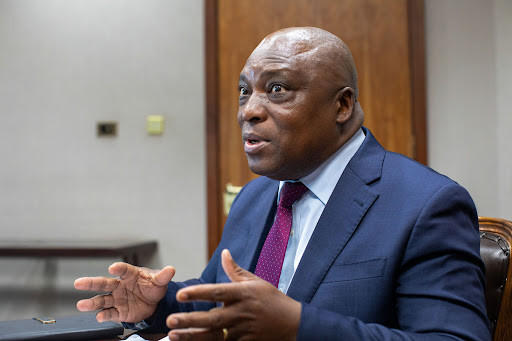
ZIMBABWE has set an ambitious five-year roadmap to de-dollarise its economy by 2030, a timeframe economists say is far shorter than that of other nations that have undergone similar transitions.
Presenting the mid-term monetary policy statement in August, Reserve Bank Governor John Mushayavanhu announced that the dedollarisation roadmap would be unveiled in November this year.
He added that the process would begin in 2025 and be finalised by 2030.
After years of economic decline, Zimbabwe adopted a multi-currency system in 2009, abandoning the local currency and accepting the United States dollar, South African rand and Botswana pula as legal tenders.
Almost two decades later, the United States dollar remains the dominant currency in the economy, despite numerous attempts to de-dollarise.
De-dollarisation refers to the gradual replacement of the use of the US dollar with the local currency in transactions.
In 2019, Zimbabwe attempted to de-dollarise by outlawing the multi-currency system and reintroducing the Zimbabwe dollar.
However, the economy took a different turn as USD transactions remained widely accepted and dominant.
- Council blames its woes on Zimdollar
- Council blames its woes on Zimdollar
- Rampaging inflation hits Old Mutual . . . giant slips to $9 billion loss after tax
- Monetary measures spur exchange rate stability: RBZ
Keep Reading
According to Confederation of Zimbabwe Industries (CZI) chief economist Cornelius Dube, Zimbabwe’s de-dollarisation target will be the shortest among countries that have successfully implemented the process.
Dube said this while presenting at the second edition of the Zimbabwe Economic Development Conference held in Bulawayo late last month.
“De-dollarisation has happened in other countries. In Bolivia, for example, bank deposit de-dollarisation (M3) shows that in 2002, 93,3% of deposits were in USD, and by 2011 they had declined to 30%. It took them nine years, with an implied annual de-dollarisation rate of 11,8%,” he said.
“Israel had a lower dollarisation level of 58% of deposits in 1983, which declined over five years at an annual rate of 11,1%.
“In Peru, dollarisation stood at 69% of deposits in 2002 and declined over 11 years at an average annual rate of 7,3%.”
Dube said Poland recorded 80% dollarisation between 1990 and 1995, with an annual de-dollarisation rate of 17,8% a situation quite similar to Zimbabwe’s current level.
“For Zimbabwe, if we aim to move from 82% to 30% of deposits by 2030, within five years, our implied annual de-dollarisation rate would need to be 18,3%,” he said.
“This means Zimbabwe’s time-frame is much shorter — in other words, we have committed to a very ambitious pace compared to other countries.
“It also means the government will need to implement tighter measures than those applied elsewhere to achieve similar results,” Dube added.
According to the International Monetary Fund, Poland’s de-dollarisation process included the removal of price distortions, which initially led to a sharp surge in prices as subsidies were withdrawn and markets adjusted.
This resulted in rising inflation and a steep fall in the real value of wages.
While industrial output and sales dropped significantly during the early months of reform, the economy soon began to stabilise as inflation slowed, the fiscal balance improved and confidence in the new market system strengthened.
Private enterprises began to emerge, small-scale trading expanded and some state-owned firms started restructuring to remain viable in a competitive environment.
However, the circumstances under which Zimbabwe seeks to dedollarise are markedly different from those of other countries in the region.
Some experts argue that what Zimbabwe needs is not only de-dollarisation but also fiscal discipline and sustainable management of external debt.











